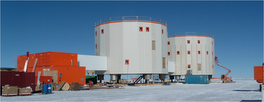A seismologist's view of thermodynamics
Since when have seismologists been interested in thermodynamics? Personally speaking, thermodynamics was one of my least favorite subjects at university. In the past few days, however, it has become necessary for me to look into it again.
Here is the problem: how to keep our seismic stations running for as long as possible after the sun goes down for the Antarctic winter, when the only power available comes from pure-lead batteries? The colder the batteries get, the less power they can supply. So the problem becomes: how can we keep the batteries warm for as long as possible?
While the sun is up, we can generate power using solar panels, so we can use some of this power to heat the enclosure in which we house the batteries. The amount of energy we dissipate as heat within the enclosure and its degree of insulation will determine the temperature we will be able to maintain the batteries at.
At sundown, we will no longer be able to actively heat the enclosures, so they will start to cool down. The temperature will fall exponentially, until it reaches the outside temperature, approximately -60C, at which the batteries are essentially dead. The rate of the exponential decay depends on the enclosure insulation, but also on the heat capacity of its contents. The batteries themselves will contribute to this heat capacity, slowing down the cooling significantly.
We still need to run some control experiments, but it seems that a combination of good insulation and the heat capacity of the batteries may allow us to keep recording for a non-negligible part of the Antarctic winter.
-----
Keep up to date with the latest developments at http://sismordia.blogspot.com




No comments:
Post a Comment